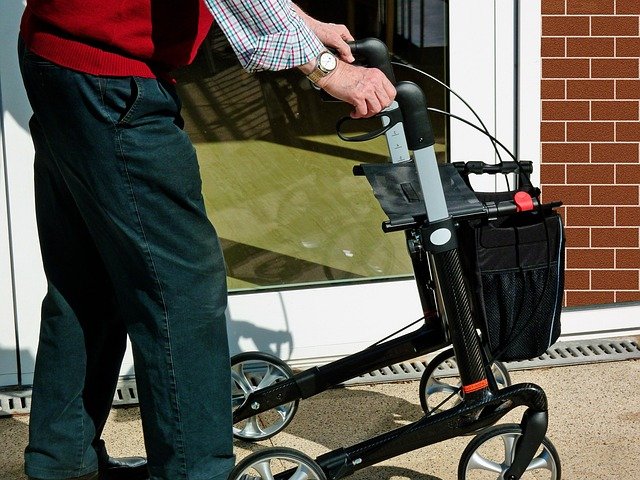Explore helpful tips on fall prevention options for seniors
Falls represent one of the most significant health risks facing older adults today, with one in four seniors experiencing a fall each year. Understanding effective prevention strategies can dramatically reduce these incidents and help maintain independence. From mobility aids to environmental modifications, numerous proven approaches exist to create safer living conditions. This comprehensive guide examines practical solutions that address both immediate safety concerns and long-term mobility needs for seniors.

Explore helpful tips on fall prevention options for seniors
Fall prevention becomes increasingly important as we age, with statistics showing that falls are the leading cause of injury-related death among adults 65 and older. The good news is that most falls are preventable through a combination of environmental changes, assistive devices, and lifestyle modifications. Understanding the various options available can help seniors and their families make informed decisions about creating safer living environments while maintaining independence and quality of life.
Enhance safety with simple home adjustments
Home modifications represent one of the most effective approaches to fall prevention. Simple changes can dramatically reduce hazards throughout the living space. Installing grab bars in bathrooms, particularly near toilets and in shower areas, provides essential support during daily activities. Adequate lighting throughout the home, including motion-activated lights for nighttime navigation, helps seniors see potential obstacles clearly.
Removing tripping hazards such as loose rugs, electrical cords, and clutter from walkways creates clearer pathways. Non-slip mats in bathrooms and kitchens add traction to potentially slippery surfaces. Stair safety improvements, including secure handrails on both sides and contrasting tape on step edges, make vertical navigation safer. These modifications often require minimal investment but provide substantial safety benefits.
Discover effective assistive devices for stability
Mobility aids serve as crucial tools for maintaining balance and preventing falls. Standard walkers provide four-point stability and work well for individuals who need consistent support while walking. Rollator walkers, equipped with wheels and hand brakes, offer mobility while maintaining stability for those who can bear weight but need occasional support.
Canes provide lighter assistance and come in various styles, from standard single-point canes to quad canes with four-point bases for enhanced stability. Walking poles, similar to hiking poles, can improve balance during outdoor activities. Each device serves different mobility needs, and proper fitting by healthcare professionals ensures optimal effectiveness and safety.
Gain insights on daily habits to prevent falls
Daily routines and habits significantly impact fall risk. Regular exercise programs focusing on strength, balance, and flexibility help maintain the physical capabilities necessary for safe mobility. Tai chi, yoga, and specific balance training exercises have proven particularly effective in reducing fall incidents among seniors.
Medication management plays a crucial role, as certain medications can cause dizziness, drowsiness, or blood pressure changes that increase fall risk. Regular medication reviews with healthcare providers help identify potential issues. Proper footwear selection, favoring shoes with non-slip soles and good ankle support while avoiding high heels or loose-fitting slippers, contributes to stability during daily activities.
Empower seniors to move confidently at home
Confidence in movement directly correlates with fall prevention success. Fear of falling often leads to reduced activity, which paradoxically increases fall risk through decreased strength and balance. Building confidence involves gradual exposure to movement challenges in safe environments, proper use of assistive devices, and understanding personal limitations without becoming overly restrictive.
Regular vision and hearing checks ensure sensory systems function optimally for environmental awareness. Maintaining social connections and staying active within comfortable limits helps preserve both physical and mental well-being. Professional assessments from occupational therapists can identify specific areas for improvement and provide personalized strategies for confident mobility.
Access practical guidance for safer living environments
Creating comprehensive safety plans requires understanding individual needs and living situations. Professional home safety assessments can identify specific hazards and recommend targeted improvements. These evaluations consider factors such as lighting adequacy, floor surfaces, furniture arrangement, and accessibility of frequently used items.
Community resources often provide valuable support, including fall prevention programs, equipment loan services, and home modification assistance. Many areas offer classes specifically designed for seniors focusing on balance training, safe movement techniques, and proper use of mobility aids. Healthcare providers can recommend local resources and coordinate care plans that address individual fall risk factors.
| Walker Type | Provider | Key Features | Cost Estimation |
|---|---|---|---|
| Standard Walker | Drive Medical | Lightweight aluminum, adjustable height | $25-$60 |
| Rollator Walker | Hugo Mobility | Four wheels, hand brakes, seat | $80-$200 |
| Knee Walker | NOVA Medical | Hands-free mobility for leg injuries | $150-$300 |
| Bariatric Walker | Medline | Heavy-duty construction, wider frame | $100-$250 |
Prices, rates, or cost estimates mentioned in this article are based on the latest available information but may change over time. Independent research is advised before making financial decisions.
Conclusion
Fall prevention requires a multifaceted approach combining environmental modifications, appropriate assistive devices, healthy habits, and professional guidance. The investment in prevention measures pays dividends in maintained independence, reduced injury risk, and improved quality of life. By implementing these strategies systematically and seeking professional advice when needed, seniors can significantly reduce their fall risk while continuing to live actively and confidently in their homes.
This article is for informational purposes only and should not be considered medical advice. Please consult a qualified healthcare professional for personalized guidance and treatment.


